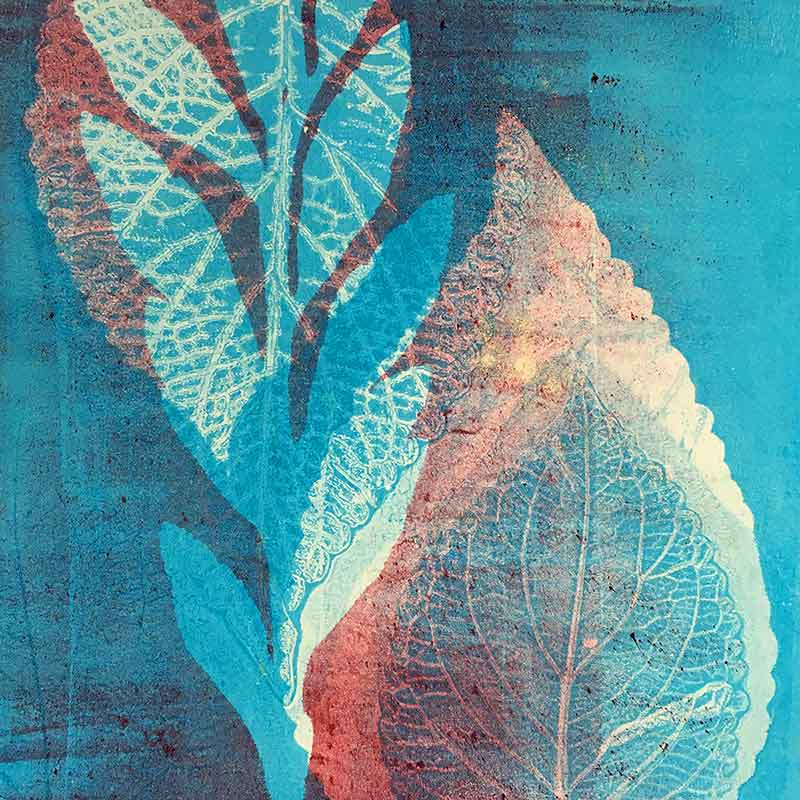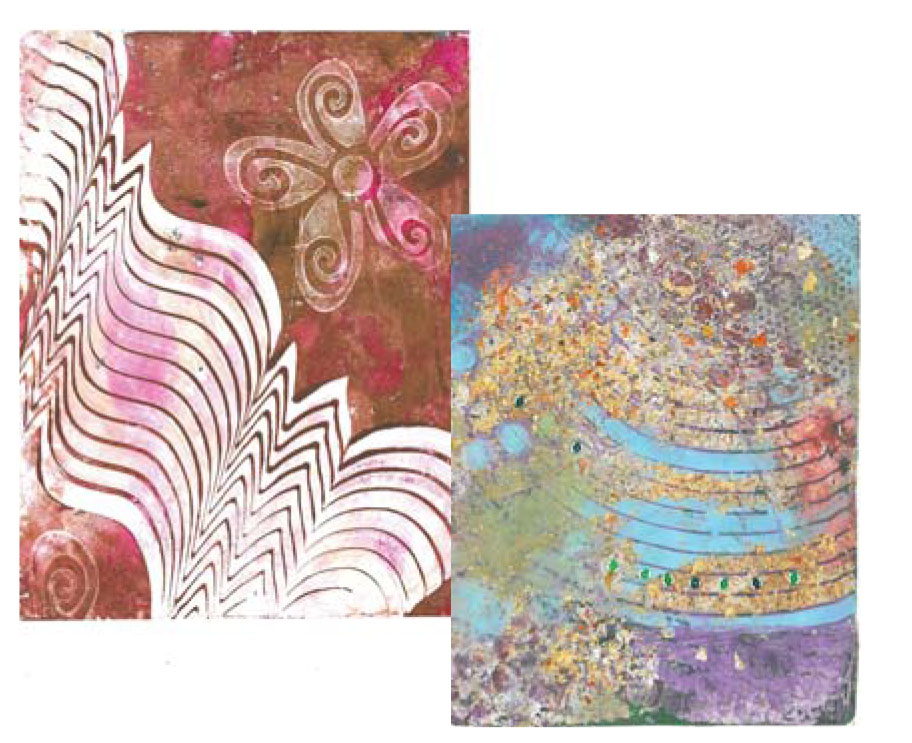I have to admit, this is one of the most frustrating processes I have tried. The Youtubes make it look so easy! But there are so many variables: type of paper, type of paint, type of gel press (hand made or manufactured), weather, humidity, etc. And not every magazine will make a successful transfer. So it can be very frustrating. But when it's successful, it's like magic. (When really, it's science)
I'm going to attach two youtubes about photo transfer, since they explain the process better on video than I can with words. But I also want to talk about my experience, which might help you.
PREPARING A PHOTO TO TRANSFER
What works best is a photo copied on a LASER printer that has very distinct value changes. Black and white seems to work better than color. The white of the paper will suck up the paint and the darks will tend to resist the paint, leaving the darks on the plate and lifting off the paint where it will be light. The carbon from the laser print is responsible for this reaction.
I took photos that I thought would work, put them in my Notanizer ap, and turned them into two value notans. I printed them in 5 x 7, which seems to be more successful than some of my larger tries.
Here are some examples of the original photo with the Notan version:
PAINTS
Some seemed to work better than others. I had more luck with heavy body paints.
One night I couldn't get anything to work. The next day I realized the problem: it was hot outside, we had the air conditioning on, and the ceiling fan was just four feet above where I was working, which caused the paint to dry out before I could get a successful print. I even tried the open acrylics, but they also dried in these circumstances.
You need to use a dark paint. I found black, brown, and even red worked pretty well. And purples.
You need to use a light coat. This takes practice on these image transfers. Too much paint, and it's a mess. Too little paint on the plate , and it dries before it can transfer.
The videos show the artist putting dabs of paint directly on the plate and then smoothing it out with a brayer. But sometimes, the paint seemed to be not as evenly covered in some spots. So you might try putting the paint on your brayer first (on the side) and then putting it on the plate.
GEL PLATE
The homemade plate is a bit stickier, but I had just as much success on it as I did with the purchased plate.
However, the purchased plate, which is harder, seems to have a smoother surface, while the homemade plate tended to get little imperfections in it.
PRACTICAL STUFF
I used white butcher paper underneath the gel plate to keep it clean and to provide a white surface to see color better. Much easier clean-up.
Use baby wipes and hand sanitizer to keep the plate clean when you are finished or between colors.
Make a "register" to help you line up your prints. It should be the same size as your print paper.
I lay mine underneath the white butcher paper, and I can see through it. This is especially helpful if you are doing extra layers on the first print, and want to line it up. This one shows 3 sizes: 5 x 7, 8 x 10, and 8 1/2 by 11.
Below are some of the more successful prints:
Brown heavy body paint; homemade gel plate; on copy paper
Brown heavy body acrylic; homemade gel plate; copy paper
red heavy body acrylic; Gel Press brand plate 8 x 10; copy paper
purple heavy body paint; Gel Press plate; on Watercolor paper
Brown heavy body paint; 5 x 7 purchased gel plate; card stock
Here are the video instructions:
Froyle Art
More from Froyle Art...some fun ideas
7 minute video with some extra elements: Nitsa Creative














































